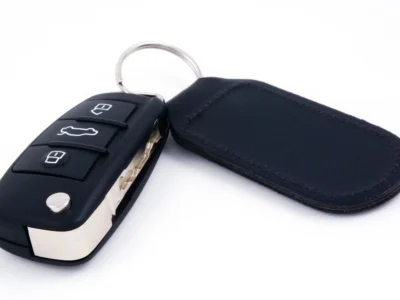
Dacia Sandero Handbrake Adjustment: A Complete Step-by-Step Guide

When your Dacia Sandero starts rolling slightly on slopes or the handbrake lever pulls up too high, it’s not just an inconvenience—it’s a sign your handbrake needs attention. In this comprehensive guide, we’ll walk you through everything you need to know about Dacia Sandero handbrake adjustment — from understanding how it works to carrying out the perfect DIY fix.
- Introduction: Why the Handbrake Matters
- Understanding the Dacia Sandero Handbrake System
- Signs Your Handbrake Needs Adjustment
- Tools You’ll Need
- Safety First: Preparing the Vehicle
- Accessing the Handbrake Adjustment Mechanism
- Step-by-Step Handbrake Adjustment Procedure
- Alternative: Adjusting the Rear Drum Brakes
- Checking Handbrake Cable Tension
- Testing the Handbrake After Adjustment
- Common Mistakes to Avoid
- When to Replace the Handbrake Cable
- How Much Does a Professional Adjustment Cost?
- Maintenance Tips to Keep Your Handbrake Firm
- Troubleshooting: If It Still Feels Loose
- Conclusion: Keeping Safety and Control in Check
- FAQs
Introduction: Why the Handbrake Matters
The handbrake—or parking brake—might seem like a secondary system, but in the Dacia Sandero, it’s a vital safety component. It ensures your car stays stationary when parked, prevents rolling on hills, and acts as a backup if your main brakes fail.
Over time, the handbrake cable stretches, or the rear brake shoes wear down, reducing its efficiency. A properly adjusted handbrake not only keeps your car safe but also extends the lifespan of your braking system.
Understanding the Dacia Sandero Handbrake System
The Dacia Sandero’s handbrake system is mechanical, relying on a cable linkage that connects the lever to the rear drum brakes (or discs on some models). When you pull the lever, it tightens the cable, which forces the brake shoes against the drum, locking the wheels.
Key components include:
- Handbrake lever and ratchet mechanism
- Adjustment nut or screw
- Equalizer bracket (splits tension evenly between both rear wheels)
- Cables leading to each rear brake
Over time, small amounts of stretch in the cable or wear in the rear shoes can lead to a loose handbrake lever that pulls up too far before engaging.
Signs Your Handbrake Needs Adjustment
Wondering if your Sandero’s handbrake is overdue for adjustment? Look for these tell-tale signs:
- The lever pulls up too high (more than 6–8 clicks).
- The car moves slightly when parked on a slope.
- Uneven braking between the rear wheels.
- Clicking sounds or inconsistent resistance in the lever.
- Handbrake warning light stays on, even when released.
A slack or poorly adjusted handbrake compromises your vehicle’s stability, so don’t delay this simple fix.
Tools You’ll Need
Before diving in, gather these essential tools:
- Socket set (typically 10mm or 13mm)
- Flathead screwdriver
- Wheel chocks
- Jack and axle stands
- Torque wrench
- Flashlight
- Gloves and protective glasses
Optional but helpful:
- Wire brush for cleaning threads
- Penetrating oil (like WD-40) for rusty components
Safety First: Preparing the Vehicle
Safety is non-negotiable. Follow these precautions:
- Park on level ground.
- Engage first gear (or “P” for automatics).
- Place wheel chocks in front of the front wheels.
- Loosen the rear wheel nuts slightly if you plan to lift the car.
- Use a jack and axle stands to secure the vehicle safely.
Accessing the Handbrake Adjustment Mechanism
In most Dacia Sandero models (2008–2024), the handbrake adjustment mechanism is located beneath the center console, just below the handbrake lever.
To access it:
You may be interested in reading Dacia Sandero Oil Capacity: Complete Guide for Every Engine Type
Dacia Sandero Oil Capacity: Complete Guide for Every Engine Type- Pull the handbrake lever fully up.
- Remove the plastic trim or rubber boot around the handbrake.
- You’ll see a metal adjustment nut on a threaded rod connecting the lever to the cable.
If your model has rear drum brakes with self-adjusters, you may also need to check the shoes inside the drum before touching the cable.
Step-by-Step Handbrake Adjustment Procedure
Here’s where the magic happens. Let’s tighten that handbrake:
Step 1: Loosen the Cable Slightly
Turn the adjustment nut counterclockwise to release some tension if it’s already tight.
Step 2: Adjust Rear Brakes (if needed)
Ensure that the rear drums or discs are properly adjusted first; the handbrake cable should only fine-tune the tension.
Step 3: Tighten the Handbrake Cable
- Turn the adjustment nut clockwise gradually.
- Pull the lever up occasionally to feel resistance.
- Stop when you get 6–7 firm clicks and the rear wheels just begin to lock.
Step 4: Test the Wheels
Spin each rear wheel by hand:
- They should rotate freely when the handbrake is down.
- They should lock firmly when it’s pulled up fully.
Step 5: Reassemble
Once satisfied, replace the handbrake cover and secure all clips.
Alternative: Adjusting the Rear Drum Brakes
If tightening the cable doesn’t help, the issue might be with the rear drum brakes.
- Remove the rear wheels.
- Take off the drum cover carefully.
- Locate the self-adjuster wheel between the brake shoes.
- Turn the adjuster clockwise until the shoes slightly drag against the drum.
- Refit everything and test again.
Think of it like tuning a guitar: too tight and it squeals; too loose and it’s silent. Balance is key.
Checking Handbrake Cable Tension
To verify correct cable tension:
- With the handbrake released, the cable should have a small amount of free play (about 1–3mm).
- Too tight, and it may cause dragging brakes; too loose, and it won’t hold the car.
Testing the Handbrake After Adjustment
You’ve done the mechanical part—now it’s time to check your results.
- Pull the lever—it should engage firmly around 6–8 clicks.
- Park on a gentle incline—the car should stay completely still.
- Drive a short distance—ensure there’s no rear brake drag or noise.
If the lever feels spongy or requires more clicks, fine-tune again.
Common Mistakes to Avoid
Many DIYers make these missteps—avoid them:
- Over-tightening the cable, causing brake drag and premature wear.
- Ignoring rear brake adjustment before tightening the cable.
- Not testing both wheels, resulting in uneven braking.
- Skipping safety stands, which is dangerous and unnecessary.
When to Replace the Handbrake Cable
Adjustment only works if the cable is in good shape. Replace it if you notice:
You may be interested in reading Dacia Sandero Oil Capacity: Complete Guide for Every Engine Type
Dacia Sandero Oil Capacity: Complete Guide for Every Engine Type Complete Guide to Kia Sportage Dashboard Symbols and Warning Lights (2001–2024)
Complete Guide to Kia Sportage Dashboard Symbols and Warning Lights (2001–2024)- Fraying or rust along the cable.
- Inconsistent handbrake feel.
- Handbrake lever reaches the top even after tightening.
A stretched cable cannot be safely reused—it’s better to install a new one and reset the adjustment.
How Much Does a Professional Adjustment Cost?
If you’d rather not get your hands dirty, a garage can handle this in about 30–45 minutes.
- Typical cost in the UK: £40–£80 for adjustment.
- Cable replacement: £100–£150, including labor.
DIY, however, costs nearly nothing—just time and care.
Maintenance Tips to Keep Your Handbrake Firm
Want to keep your handbrake feeling solid for years?
- Use it regularly to prevent rust and stiffness.
- Clean and lubricate the mechanism annually.
- Avoid parking with the handbrake on in freezing conditions.
- Check rear drums or discs every 12 months for wear.
A little preventive care goes a long way toward avoiding costly repairs.
Troubleshooting: If It Still Feels Loose
If your handbrake remains soft or ineffective after adjustment:
- Recheck rear brake shoes or pads for wear.
- Inspect the cable equalizer for rust or imbalance.
- Ensure both rear cables move freely.
- Look for seized adjusters inside the drums.
Sometimes the issue isn’t with the cable at all but with worn-out brake components.
Conclusion: Keeping Safety and Control in Check
Adjusting the Dacia Sandero handbrake is a straightforward job, but one that makes a huge difference in daily safety. Whether you’re parking on a steep hill or simply want that reassuring “click” of confidence, this guide empowers you to handle it yourself.
Your car rewards regular attention, and the handbrake is no exception. A few turns of a nut can mean the difference between peace of mind and potential danger.
FAQs
1. How often should I adjust the Dacia Sandero handbrake?
Typically once a year or whenever you notice the lever pulling too high.
2. Can I adjust the handbrake without lifting the car?
Yes, if you’re only tightening the lever cable—but for a full inspection, lifting is safer.
3. What if my handbrake light stays on after adjustment?
It might indicate a switch issue under the lever or residual cable tension.
4. Do I need to replace the handbrake cable when changing rear shoes?
Not always, but it’s a good time to inspect it for wear or corrosion.
 Dacia Sandero Oil Capacity: Complete Guide for Every Engine Type
Dacia Sandero Oil Capacity: Complete Guide for Every Engine Type Complete Guide to Kia Sportage Dashboard Symbols and Warning Lights (2001–2024)
Complete Guide to Kia Sportage Dashboard Symbols and Warning Lights (2001–2024) Kia Sportage TPMS Reset: The Complete Step-by-Step Guide
Kia Sportage TPMS Reset: The Complete Step-by-Step Guide5. Is it safe to drive with a weak handbrake?
No. A weak handbrake can lead to rolling, especially on inclines. Adjust or repair it promptly.
If you want to know other articles similar to Dacia Sandero Handbrake Adjustment: A Complete Step-by-Step Guide you can visit the category Service and Parts.
Deja una respuesta





More content of your interest